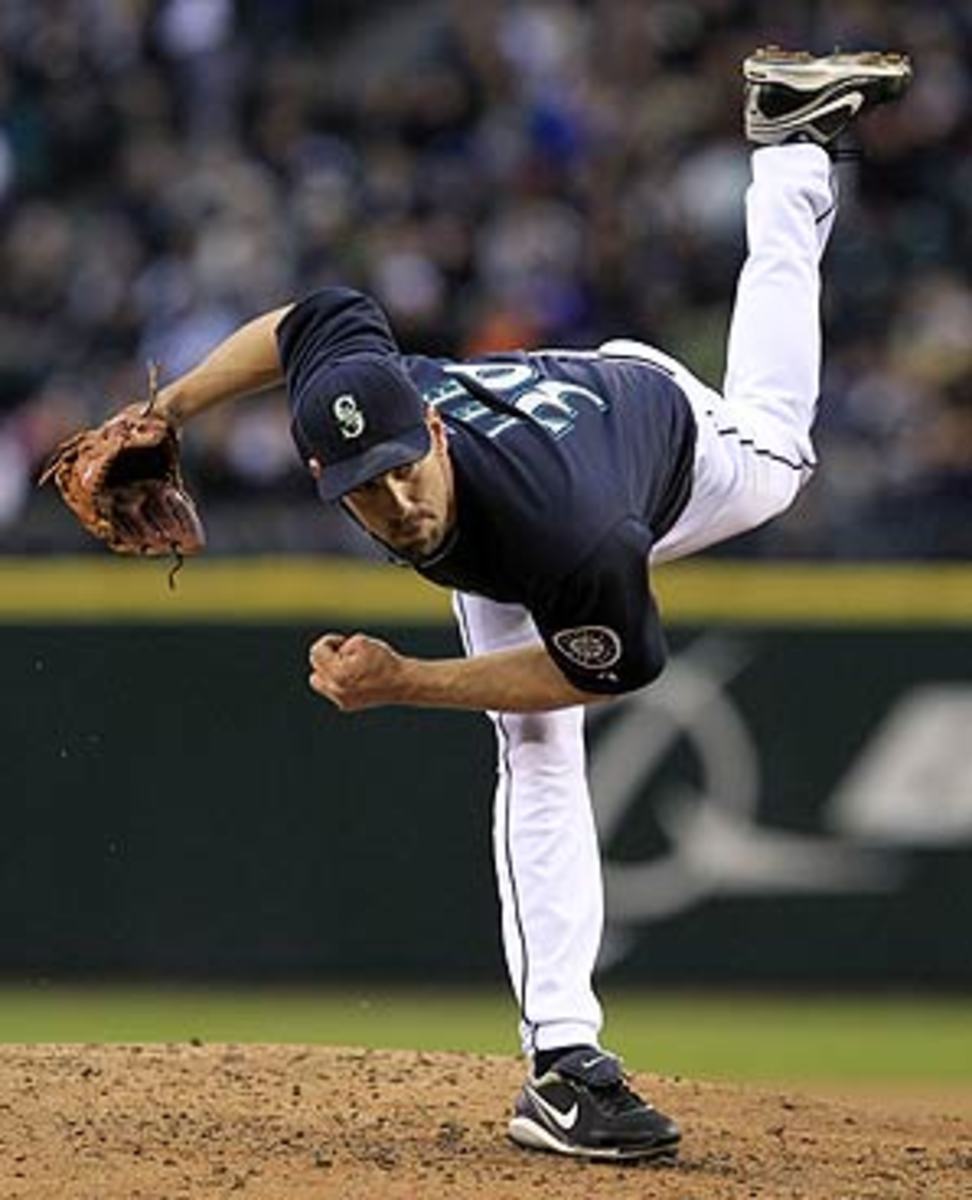Cliff Lee is poised to produce, but he's not the problem in Seattle
Lee's strong performance on Friday night invites the question of whether projection systems are underestimating him for 2010. Any structured system is going to take into account Lee's last three years at a minimum, and many make use of his entire career to date. As you can see, the most well-known systems churn out fairly conservative estimates of Lee's 2010 effectiveness:
• PECOTA (Baseball Prospectus): 3.14 ERA• ZIPS (Baseball Think Factory): 3.42 ERA• CHONE (BaseballProjection.com): 3.47 ERA• Marcel (Tom Tango): 3.52 ERA
If there is a problem with these figures, it is that they may be including data that is irrelevant to Lee's 2010 potential. In 2007, after two seasons of above-average pitching, Lee fell apart, en route to a 6.29 ERA and a demotion to Triple-A in July. Upon his return in September he barely made an impression, logging just four mopup appearances, not nearly enough for his 6:1 K/BB or 70% strike percentage to have any meaning. When 2008 opened, however, Lee was a new pitcher, throwing more first-pitch strikes than he ever had before, with the resulting positive counts putting him in complete control of at-bats. He went on to win the AL Cy Young Award and then followed it up with a strong 2009 season that entrenched him in the top tier of MLB starters. From 2002 through 2007, Lee had a 4.64 ERA, struck out a bit more than two men for every one he walked, and walked about three per game. In the two seasons since, he has a 2.89 ERA, nearly five strikeouts for every man walked, and just 1.5 walks per game. Lee has also sharply increased his ground ball rate at the expense of fly balls, making it harder for hitters to generate power against him.
The two pitchers, one pre-2008, one since, share little but a name. To factor in that 2007 performance in estimating what Lee can mean to the Mariners in 2010 is a bit like factoring in Mark Wahlberg's rap skills in guessing where his acting career could go from here. It's information, but it has so little connection to the current player that it's irrelevant at best, misleading at worst.
Consider a pitcher who has been connected to Lee in many ways over the past year: Roy Halladay. Halladay, like Lee a talented pitcher who had some early-career success, washed out of the AL in 2000 with a 10.64 ERA. He would rebuild his approach, much as Lee did, and return in 2001 to post a 3.16 ERA in 105 innings, and then to lead the AL in innings pitched in 2002 while posting a 2.93 mark. A system projection for Halladay heading into 2003 wouldn't have had sufficient information on him, wouldn't have seen that the 2000 season had essentially no bearing on his expected performance and wouldn't have pegged him to win the AL Cy Young Award, which is what he did.
No, there's a strong argument that Lee's projection should be based almost entirely on his 2008 and 2009 seasons, and when you project off that, and factor in his new, pitcher-friendly home ballpark and the quality defense behind him, you find a pitcher who is going to be very, very difficult to score upon. For the past two seasons, Lee's Fielding Independent Pitching ERA, which attempts to isolate the pitcher's performance from that of his teammates, has been below 3.00 in the aggregate. That seems like a good baseline for a neutral projection; throw in the run context, that ballpark and defense, and Lee seems likely to post an ERA between 2.60 and 2.80. His early-season abdominal injury will chip away at his value, knocking four starts and maybe 30 innings from his totals, but that still leaves him plenty of runs to save. The gap between the value of the standard projections and one that considers just Lee's recent track record is close to two wins above replacement, which for Lee is the difference between being an above-average starter and being a great one. And that's a difference that could pay off handsomely when Lee becomes a free agent at season's end.
With Lee and Felix Hernandez, in fact, the Mariners have two players who all by themselves would turn an average baseball team into one of the very best in baseball, the two being worth a dozen wins above replacement between them. The Mariners' problem is that they haven't put 23 guys around them who add up to average. In the season's first month Doug Fister did a pretty good Cliff Lee impersonation, so you can't really blame Lee's injury for Seattle's 11-15 mark. No, the Mariners' offense is squandering the value of their starting pitchers, and could render all of this prognostication for naught. If the Mariners insist on playing without a catcher, left fielder and DH, while committed to defense-first players at first base and shortstop, their great rotation tandem will serve little purpose other than getting their fans home in plenty of time to catch the late local news.





